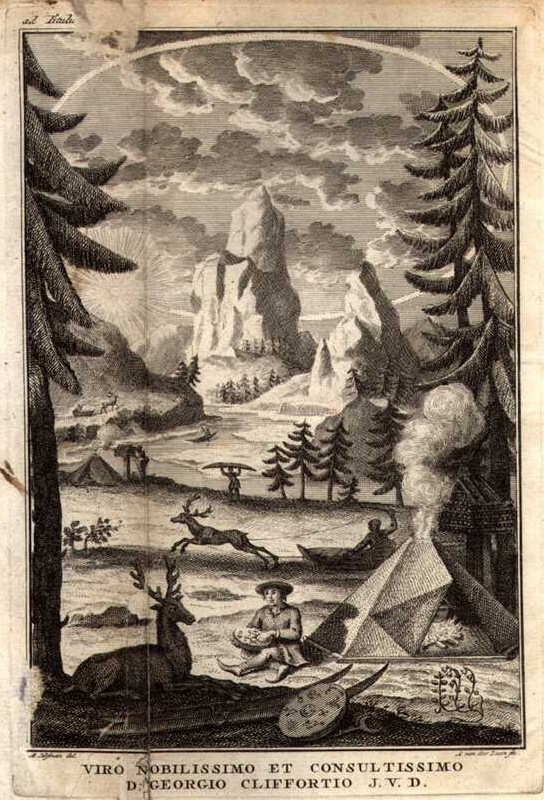Flora Lapponica on:
[Wikipedia]
[Google]
[Amazon]
 ''Flora Lapponica'' (Amsterdam, 1737) is an account of the plants of Lapland written by
''Flora Lapponica'' (Amsterdam, 1737) is an account of the plants of Lapland written by
 ''Flora Lapponica'' (Amsterdam, 1737) is an account of the plants of Lapland written by
''Flora Lapponica'' (Amsterdam, 1737) is an account of the plants of Lapland written by botanist
Botany, also called , plant biology or phytology, is the science of plant life and a branch of biology. A botanist, plant scientist or phytologist is a scientist who specialises in this field. The term "botany" comes from the Ancient Greek wo ...
, zoologist
Zoology ()The pronunciation of zoology as is usually regarded as nonstandard, though it is not uncommon. is the branch of biology that studies the Animal, animal kingdom, including the anatomy, structure, embryology, evolution, Biological clas ...
and naturalist Carl Linnaeus
Carl Linnaeus (; 23 May 1707 – 10 January 1778), also known after his ennoblement in 1761 as Carl von Linné Blunt (2004), p. 171. (), was a Swedish botanist, zoologist, taxonomist, and physician who formalised binomial nomenclature, the ...
(1707-1788) following his expedition to Lapland
The expedition to Lapland, the northernmost region in Sweden, by Carl Linnaeus between May and October 1732 was an important part of his scientific career.
Linnaeus departed from Uppsala and travelled clockwise around the coast of the Gulf of ...
.
Over the period from 12 May 1732 to 10 September 1732, and with a grant from the Royal Society of Sciences in Uppsala
The Royal Society of Sciences in Uppsala ( sv, Kungliga Vetenskaps-Societeten i Uppsala), is the oldest of the royal academies in Sweden, having been founded in 1710. The society has, by royal decree of 1906, 50 Swedish fellows and 100 foreign. ...
for his journey, Anderson (1997), pp. 42–43. Blunt (2001), p. 38. Linnaeus was able to combine his interest in medicine with that of natural history to travel for five months in Lapland collecting animals, plants, and minerals.
In ''Flora Lapponica'' Linnaeus's ideas about nomenclature
Nomenclature (, ) is a system of names or terms, or the rules for forming these terms in a particular field of arts or sciences. The principles of naming vary from the relatively informal naming conventions, conventions of everyday speech to the i ...
and classification Classification is a process related to categorization, the process in which ideas and objects are recognized, differentiated and understood.
Classification is the grouping of related facts into classes.
It may also refer to:
Business, organizat ...
were first used in a practical way, making this the first proto-modern flora
Flora is all the plant life present in a particular region or time, generally the naturally occurring (indigenous) native plants. Sometimes bacteria and fungi are also referred to as flora, as in the terms '' gut flora'' or '' skin flora''.
E ...
. The account covered 534 species, used the Linnaean classification system and included, for the described species, geographical distribution and taxonomic notes. It was Augustin Pyramus de Candolle
Augustin Pyramus (or Pyrame) de Candolle (, , ; 4 February 17789 September 1841) was a Swiss botanist. René Louiche Desfontaines launched de Candolle's botanical career by recommending him at a herbarium. Within a couple of years de Candol ...
who attributed Linnaeus with ''Flora Lapponica'' as the first example in the botanical genre of Flora writing. Botanical historian E.L. Greene described ''Flora Lapponica'' as “the most classic and delightful of Linnaeus’s writings”.
A Lapland plant, ''Linnaea borealis
''Linnaea borealis'' is a species of flowering plant in the family Caprifoliaceae (the honeysuckle family). Until 2013, it was the only species in the genus ''Linnaea''. It is a boreal to subarctic woodland subshrub, commonly known as twinflower ...
'', was named by the eminent botanist Jan Frederik Gronovius
Jan Frederik Gronovius (also seen as Johann Frederik and Johannes Fredericus) (10 February 1690 in Leiden – 10 July 1762 in Leiden) was a Dutch botanist notable as a patron of Linnaeus.
John Clayton, a plant collector in Virginia sent him many ...
in commemoration of Linnaeus's achievements. In the '' Critica Botanica'' Linnaeus uses this name to advocate the use of commemorative personal names as botanical names:
An update of this work was published in 1792 by James Edward Smith James Edward Smith may refer to:
* James Edward Smith (botanist), English botanist and founder of the Linnean Society
* James Edward Smith (murderer), American murderer
* James Edward Smith (politician), Canadian businessman and mayor of Toronto
* ...
, citing Linnaeus as the main author and using Linnaeus' binomial nomenclature
In taxonomy, binomial nomenclature ("two-term naming system"), also called nomenclature ("two-name naming system") or binary nomenclature, is a formal system of naming species of living things by giving each a name composed of two parts, bot ...
. These books are not to be confused with Gerog (Göran) Walhenberg's 1812 "Flora Lapponica", who organized species according to their vegetation types and geographic areas.
References
External links
{{authoritycontrol Florae (publication) Carl Linnaeus Flora of Finland Flora of Sweden Sápmi Botany in Europe 1737 books 18th-century Latin books